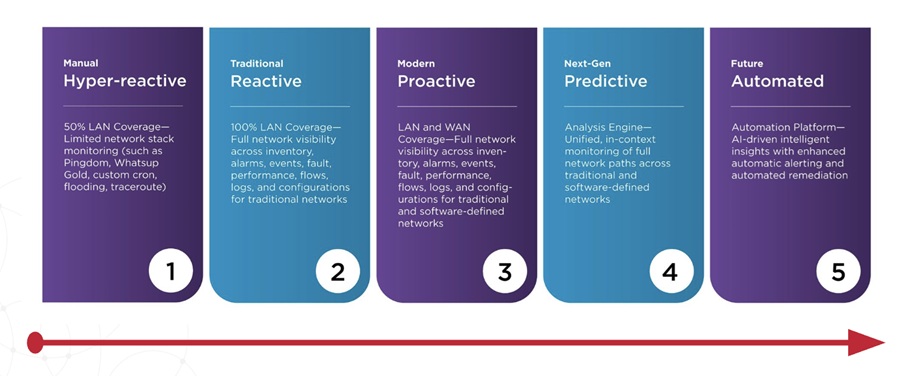
The term "war room" comes from military: a place to strategize and debate. Over the years this concept has been heavily adopted by others, from NFL teams drafting the next star player to software developers rushing to fix code flaws. Given the broad management challenges associated with network operations, it's no surprise that war rooms have become commonplace in IT. Rolling out a new ERP system? To the war room for team collaboration and planning. Critical financial service just crashed? The war room is the place to be for some dramatic finger pointing and lightning-fast problem resolution.
For anyone that's been in a war room, there's no denying that it can be an intense place. Depending on what side of the table you're on it can be teeming with confidence and dominance, or veiled in defensiveness and uncertainty. Teams go to the war room to win. But, the ideal outcome is a solid plan or solution designed to deliver the best outcome while utilizing the least resources.
What are some of the key triggers that drive IT teams into the war room and how can you prepare yourself to contribute in a positive way?
Most war room sessions are either project-focused or response-focused. For example, project-focused war room triggers could be an infrastructure migration for software-defined networks or a shift to a hybrid cloud environment. Other possible triggers include large digital transformation initiatives that require major applications rollouts, such as a 100 percent commitment to going paperless through digitization and immediate access to electronic records, or a major ERP consolidation after a corporate merger.
On the response side, the pool of triggers can be vast. For example:
■ A major network or service outage. Imagine your hosted infrastructure provider goes down – yes, this has even happened to AWS.
■ A security incident or potential intrusion. For example, imagine getting a call from the FBI saying that a recent nationwide investigation into credit card fraud has turned up your company as the common denominator.
■ Investigating a serious security breach, such as one that exploited a known vulnerability that you failed to patch, and resulted in tens of millions of records stolen.
Imagine what the war room was like when Equifax was breached back in 2017. Or, when Salesforce had its major cloud outage in 2016, or when Slack experiences continual service outages. What about GDPR? Imagine the war room planning sessions that occurred as the deadline crept closer and closer. That's one you probably don't need to imagine; it's likely you lived through it.
Whether proactive or reactive in nature, war room sessions fundamentally come down to problem solving. But the ultimate goal is to eliminate these sessions altogether. Teams work hard to find problems before they impact the network. It's often called creating a "standard of visibility." They use solutions and tools that offer full system monitoring and visibility (NPMD), with stored data for historical reference; regular and disciplined penetration testing to catch misconfigurations, vulnerabilities and more; cyber security systems to detect hacks and vulnerabilities; and full network packet capture for troubleshooting network problems in real-time.
Read How to Prepare for Your Next Network War Room Debate - Part 2, offering tips on how to win in the war room.


